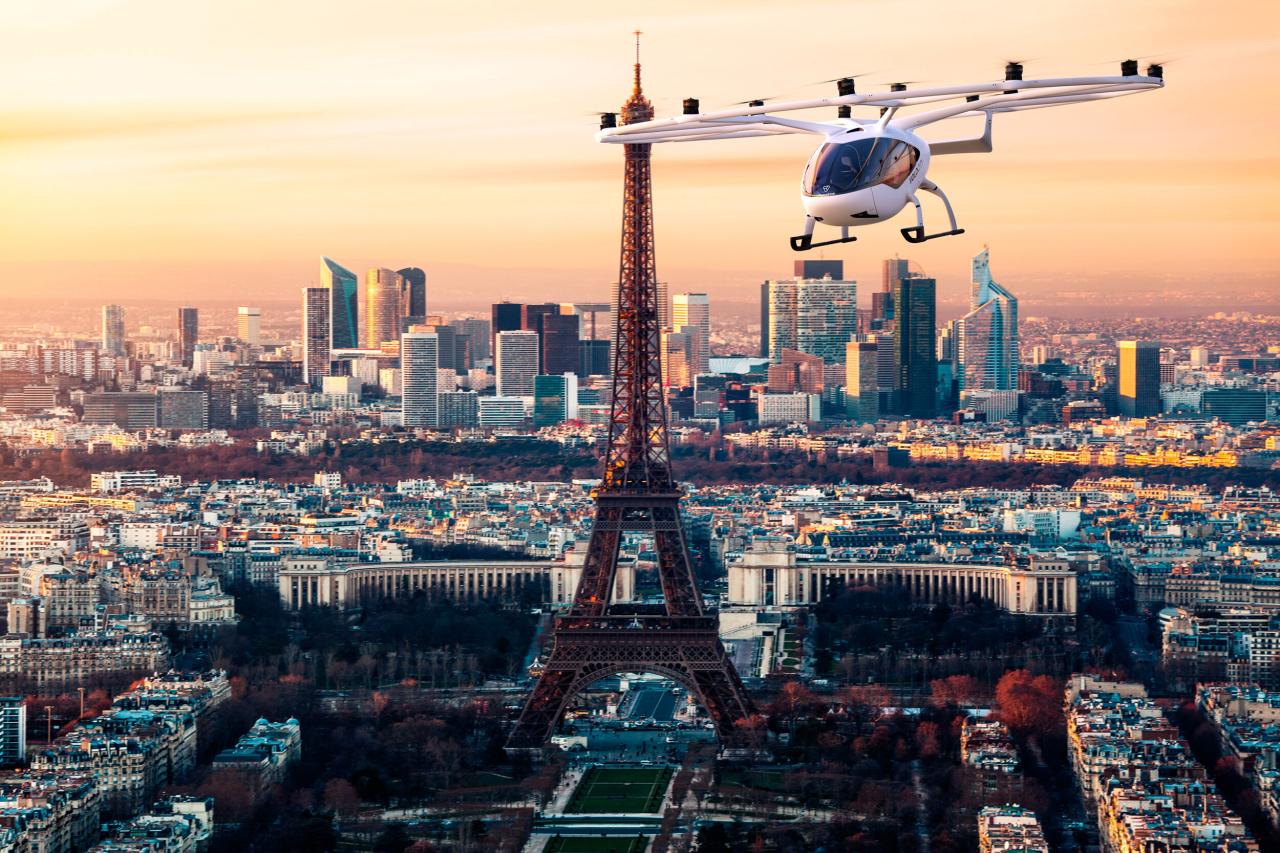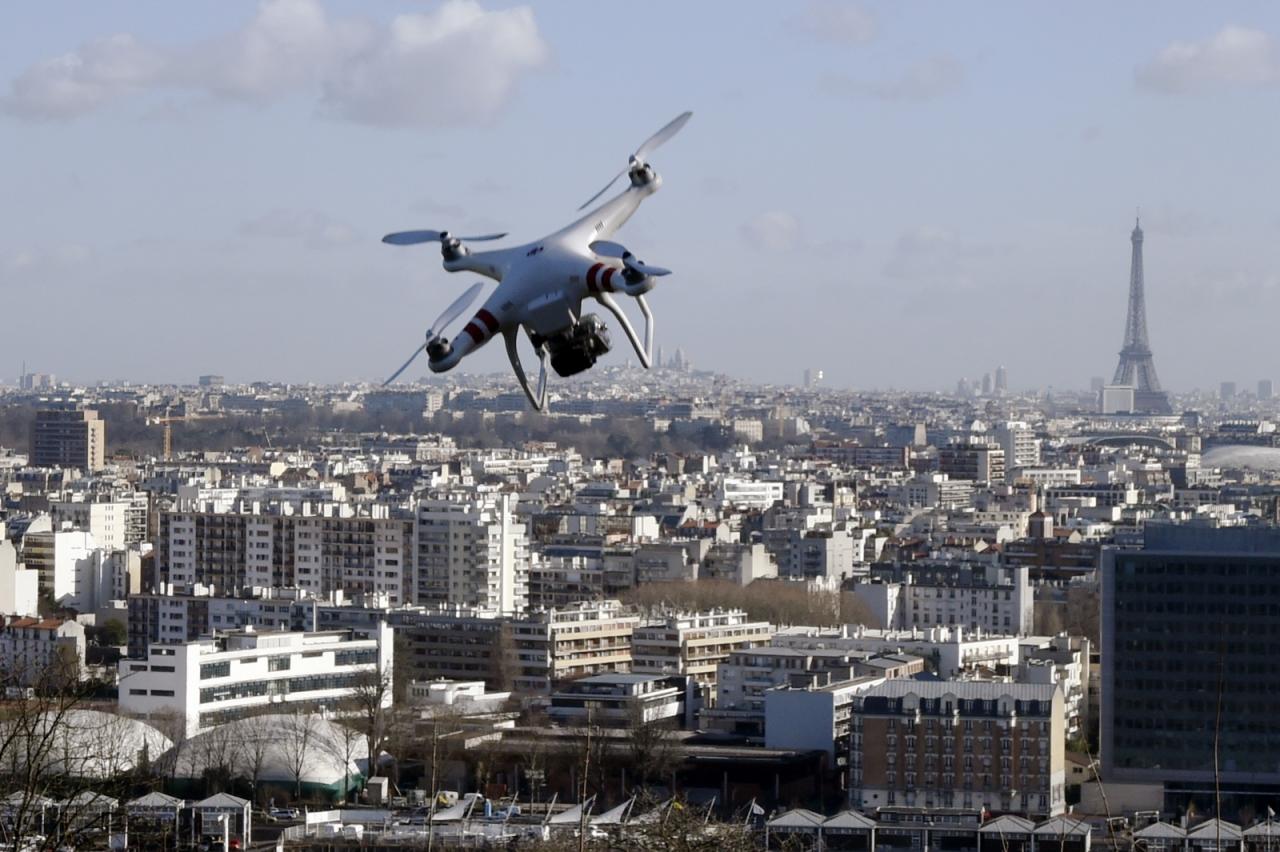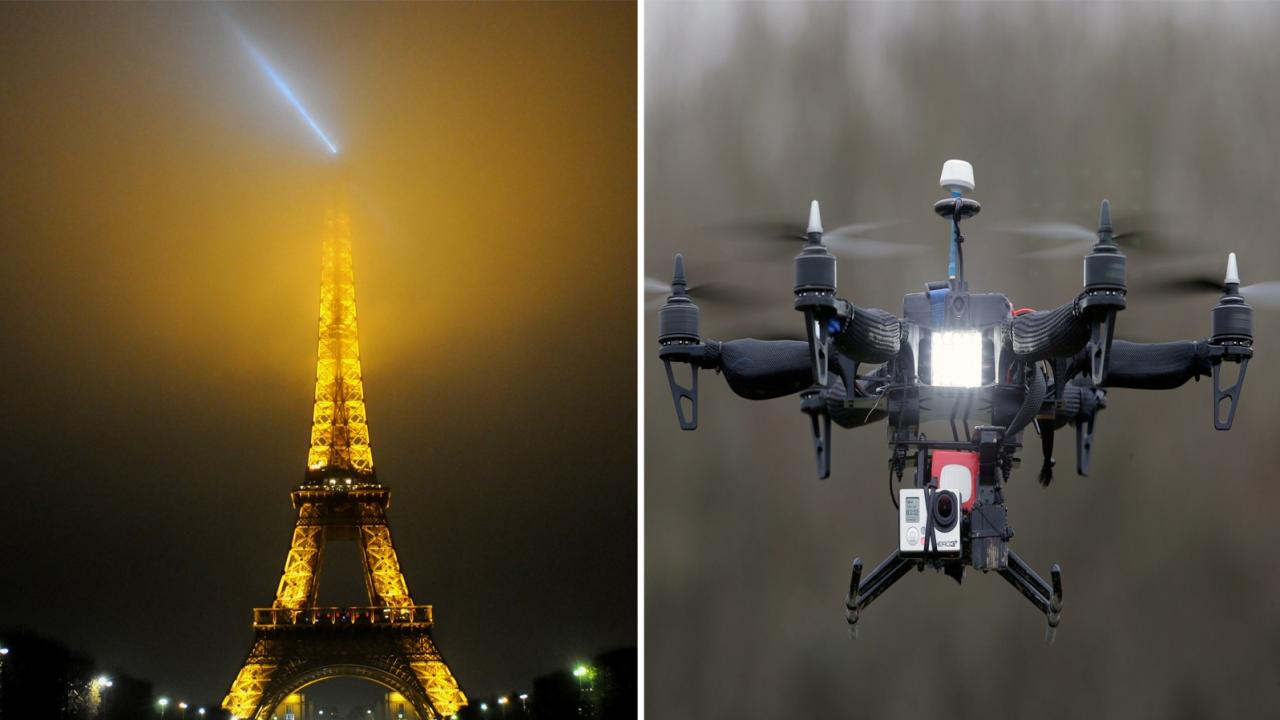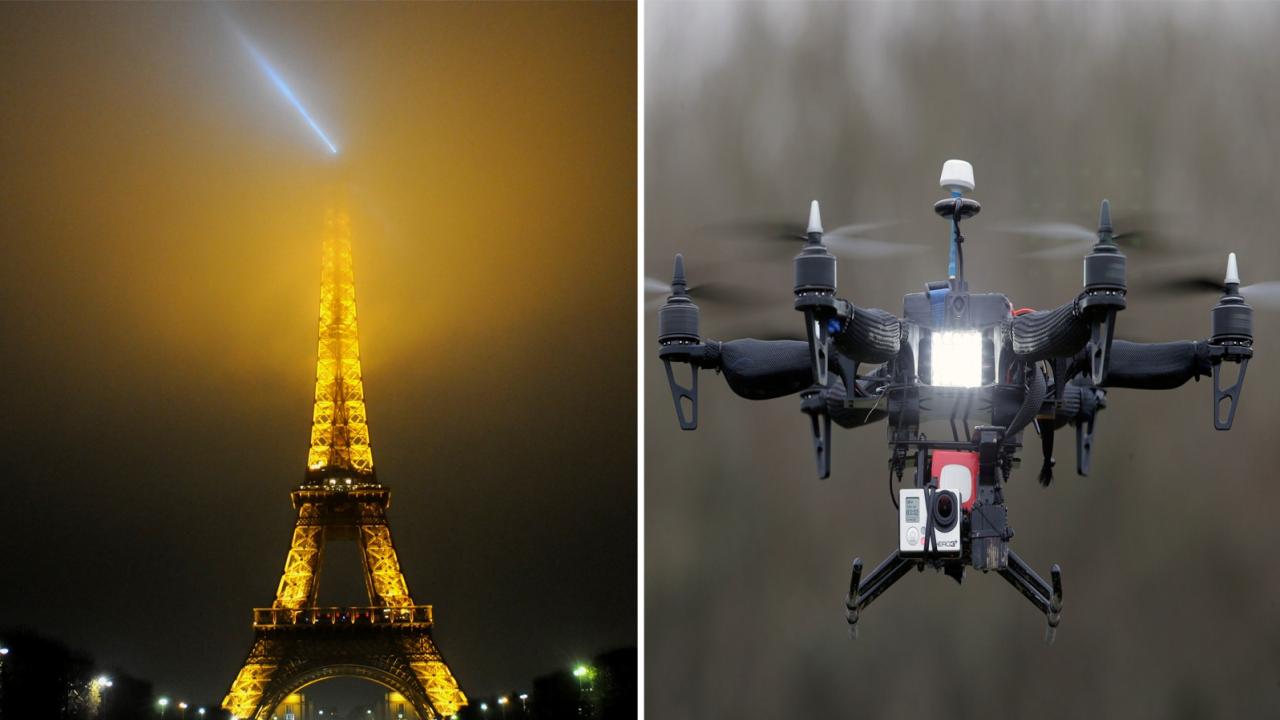Drone in Paris: Navigating the City of Lights from above offers a unique perspective, but it’s not as simple as pointing your drone and pressing record. This guide delves into the fascinating world of drone operation in Paris, covering everything from strict regulations and security concerns to the exciting possibilities for tourism, delivery services, and more. We’ll explore the challenges and rewards of using drones in this iconic city, examining both the legal framework and the practical realities of flying in such a densely populated urban environment.
We’ll examine the current regulations, highlighting the differences between recreational and commercial drone use. We’ll also look at popular activities like aerial photography and the potential for drone-based tourism, exploring potential routes and showcasing the stunning Parisian landmarks. Finally, we’ll consider the future of drones in Paris and how technological advancements might shape their role in the years to come.
Thinking about drones in Paris? You’ll find amazing architecture to film, but before you take off, check out the latest regulations. For up-to-the-minute info on drone laws and new tech, head over to drone news today to stay informed. Then, get back to planning your Parisian drone photography – remember to get all the necessary permits!
Drone Regulations in Paris
Navigating the Parisian skies with a drone requires careful attention to the legal framework. Understanding these regulations is crucial for both recreational and commercial drone operators to avoid penalties and ensure safe operations.
Current Legal Framework for Drone Operation in Paris

Drone operation in Paris falls under French national regulations, which are relatively strict compared to some other European countries. These regulations cover aspects like flight authorization, airspace restrictions, and operational safety. Specific rules apply depending on the type of drone, its intended use (recreational or commercial), and the location of the flight.
Permits and Licenses for Commercial Drone Flights
Commercial drone operations in Paris necessitate obtaining specific permits and licenses from the Direction Générale de l’Aviation Civile (DGAC), the French civil aviation authority. The application process involves demonstrating competency, insurance coverage, and a detailed flight plan that adheres to all safety regulations. The complexity and requirements vary based on the nature of the commercial activity.
Comparison with Other European Cities
Compared to cities like Amsterdam or London, Paris’s drone regulations are arguably stricter. While other major European cities have established frameworks, Paris often places greater emphasis on airspace restrictions around sensitive areas, such as historical monuments and crowded public spaces. This reflects a higher level of caution given the city’s dense population and numerous protected landmarks.
Thinking about using drones in Paris? Regulations are pretty strict, so you’ll want to check the latest airspace rules before you fly. Understanding the current tech landscape is key, and that includes knowing the open ai status , as AI plays a growing role in drone tech and safety features. Ultimately, responsible drone operation in Paris means staying informed on both local laws and technological advancements.
Key Aspects of Parisian Drone Regulations
| Regulation Type | Specific Requirement | Penalty for Violation | Applicable Areas |
|---|---|---|---|
| Flight Authorization | Permit required for commercial flights; registration required for all drones above a certain weight. | Fines, drone confiscation, potential legal action. | All of Paris, with stricter rules near airports and sensitive sites. |
| Airspace Restrictions | No-fly zones around airports, monuments, and crowded areas. Height restrictions often apply. | Fines, drone confiscation. | Specific zones designated by DGAC. |
| Operational Safety | Mandatory insurance, pilot competency, adherence to visual line-of-sight rules. | Fines, suspension of permits. | All drone operations. |
Popular Drone Activities in Paris
The unique blend of historical architecture and modern city life makes Paris an attractive location for various drone activities, both recreational and commercial.
Recreational Drone Activities
Three popular recreational activities include capturing aerial footage of iconic landmarks, exploring the city’s parks and green spaces, and practicing drone photography and videography skills. The appeal lies in the unique perspective offered by aerial views of Paris’s famous architecture and charming streets.
- Aerial Photography/Videography of Landmarks: Capturing stunning views of the Eiffel Tower, Louvre Museum, and other landmarks from unique angles.
- Exploring Parks and Green Spaces: Filming the serene beauty of the Tuileries Garden, Luxembourg Gardens, and Bois de Boulogne from above.
- Drone Racing and Practice: Utilizing designated areas for practicing flight maneuvers and drone racing.
Commercial Drone Applications
Commercially, drones find applications in aerial photography for real estate, construction monitoring, and tourism marketing. Delivery services are also exploring the potential of drones for efficient and timely package transport within the city.
Potential for Drone Tourism
Drone tourism in Paris holds significant potential. Guided drone tours could showcase the city’s beauty from unique perspectives, offering breathtaking views of the Seine River, charming neighborhoods, and famous monuments. Pre-planned routes could highlight specific historical and cultural sites, enhancing the tourist experience.
- Advantages: Unique perspectives, enhanced tourist experience, potential for creating memorable souvenirs.
- Disadvantages: Regulatory hurdles, safety concerns, potential for environmental impact.
Infrastructure and Drone Usage
Paris’s infrastructure presents both opportunities and challenges for drone operation. The dense cityscape, tall buildings, and significant airspace restrictions influence how drones can be effectively utilized.
Existing Infrastructure and its Impact
The city’s dense population and numerous tall buildings create significant airspace challenges. Numerous no-fly zones exist around airports, monuments, and other sensitive areas. This necessitates careful flight planning and adherence to strict regulations. The presence of numerous radio towers and other communication infrastructure can also impact drone operation.
Challenges of Dense Population and Architecture
The high population density and complex architecture of Paris create challenges for safe and efficient drone operation. The risk of collisions with buildings, birds, or other aircraft is higher compared to less dense urban environments. Maintaining visual line-of-sight can also be difficult in crowded areas.
Hypothetical Drone Delivery System
A hypothetical drone delivery system for the Marais district could involve establishing designated drone landing zones on rooftops or in secure locations. Drones could be used to deliver small packages from local businesses to customers within the district, optimizing delivery times and reducing traffic congestion. This system would require careful integration with existing infrastructure and robust safety protocols.
Drone Navigating the Parisian Skyline

Imagine a drone ascending from the Champ de Mars, its camera capturing the majestic Eiffel Tower against a backdrop of a clear Parisian sky. As it moves towards the Seine, it gracefully navigates between the spires of Notre Dame Cathedral and the Louvre Museum, with the bustling city streets below. Potential obstacles include high-rise buildings, radio towers, and the occasional flock of birds.
The drone skillfully avoids these, providing a breathtaking aerial perspective of the city’s iconic landmarks.
Safety and Security Concerns
Drone operations in Paris, like in any major city, raise safety and security concerns that need careful consideration and mitigation.
Safety Risks Associated with Drone Operation
Potential safety risks include collisions with buildings, aircraft, or birds; loss of control due to technical malfunction or interference; and potential injuries to people on the ground. Privacy violations through unauthorized aerial surveillance are also a major concern.
Security Measures to Prevent Malicious Use
Security measures include the use of counter-drone technologies, such as detection systems and jamming devices, to prevent unauthorized drone flights near sensitive locations. Stricter regulations, registration requirements, and pilot training also contribute to enhancing security.
Comparison with Other Global Cities, Drone in paris
Compared to other global cities like New York or Tokyo, Paris’s security protocols are relatively stringent, reflecting the city’s high concentration of historical landmarks and sensitive infrastructure. Many cities are adopting similar strategies involving a combination of technological solutions and strict regulations.
Security Threats, Likelihood, and Mitigation Strategies
| Security Threat | Likelihood | Mitigation Strategy |
|---|---|---|
| Unauthorized drone flights near sensitive locations | Moderate to High | Counter-drone technology, stricter regulations, no-fly zones. |
| Drone-based surveillance and privacy violations | Moderate | Clear regulations on data collection, public awareness campaigns. |
| Drone-related accidents or collisions | Low to Moderate | Pilot training, technical inspections, mandatory insurance. |
Future of Drones in Paris
The future of drones in Paris holds immense potential across various sectors, driven by technological advancements and evolving societal needs.
Predicted Role of Drones in Parisian Life (Next 5 Years)
Within the next five years, we can expect a gradual increase in the use of drones for commercial applications, particularly in delivery services and infrastructure inspection. Improved drone technology and more streamlined regulations could lead to greater integration of drones into daily Parisian life, similar to the growing use of delivery drones in cities like Amsterdam or Reykjavik.
Potential Advancements in Drone Technology
Advancements in areas like autonomous navigation, battery technology, and obstacle avoidance systems will significantly enhance the safety and efficiency of drone operations. Improved sensors and AI-powered analytics could also lead to more sophisticated applications in areas like urban planning and environmental monitoring.
Impact of Increased Drone Usage
Increased drone usage could lead to improved efficiency in various sectors, reduced traffic congestion, and enhanced public safety. However, potential negative impacts include privacy concerns, noise pollution, and potential environmental issues related to battery disposal and drone accidents.
Future Applications of Drones in Paris (By Sector)

- Tourism: Guided drone tours, aerial photography for marketing.
- Emergency Services: Search and rescue operations, aerial surveillance.
- Delivery: Package delivery, medical supply transport.
- Infrastructure Inspection: Bridge and building inspections, monitoring of public utilities.
- Environmental Monitoring: Air quality monitoring, urban heat island detection.
Closing Notes
Flying a drone in Paris presents a unique blend of challenges and opportunities. While the regulations are stringent, designed to ensure safety and security, the potential rewards are immense. From capturing breathtaking aerial views of iconic landmarks to revolutionizing delivery services and emergency response, drones could significantly impact Parisian life. As technology advances and regulations adapt, the future of drones in Paris promises to be both exciting and transformative, shaping the city’s landscape in ways we are only beginning to imagine.
FAQ Insights: Drone In Paris
What are the penalties for violating drone regulations in Paris?
Penalties vary depending on the violation but can include fines, drone confiscation, and even legal action.
Thinking about drones in Paris? You might see them buzzing around for photography or deliveries, but the tech is used in much more serious ways. Check out this article on drone attacks in Russia to see how drone technology is shaping global conflicts. It’s a stark contrast to the more recreational uses we often see in cities like Paris, highlighting the diverse applications of this rapidly evolving technology.
Can I fly a drone in a park in Paris?
Generally, no. Most parks have restrictions on drone flights. Check local regulations for specific areas.
Where can I get insurance for my drone in Paris?
Many standard drone insurance providers offer coverage in France; check with your current provider or shop online for options.
Are there any designated drone flight zones in Paris?
Currently, there aren’t officially designated drone flight zones, but regulations often implicitly restrict flight near sensitive areas.
